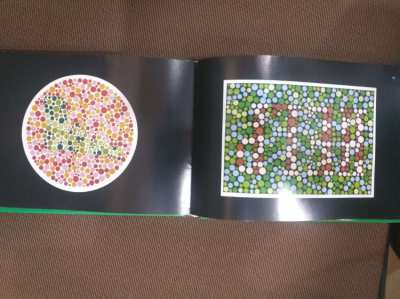Killers of the Flower Moon: The Osage Murders and the Birth of the FBI
- กลางเมืองพัทยา
- 15 Oct 2024 : 10:55 am
- ไอดี: 420392
รายละเอียดของโฆษณา
Killers of the Flower Moon: The Osage Murders and the Birth of the FBI, by American journalist David Grann..
In the early 1870's, the Osage, a Native American tribe of the Great Plains, were forced by the US government to move out of Kansas as white settlers (including Laura Ingalls Wilder’s family of the Little House on the Prairie) arrived in the region.
The Osage moved to Oklahoma where, because they paid for their new lands, they kept the mineral rights.
The 1897 Bartlesville gusher put Oklahoma on the oil map and by 1907 the state was the largest US producer of oil, making the Osage “the richest nation in the world per capita”, with each Osage receiving royalties from the oil revenue; in 1923 alone, the tribe earned $30 million – about $400 million today.
But this was not to be without dire consequences for them. In 1921 the US Congress passed a law requiring that, because of “incompetence”, each Osage member had a government-appointed paid “guardian” to manage his or her oil income.
In the early 1920's a series of mysterious murders, using gunshot and poison, took the lives of dozens of the Osage. The murders were committed so the perpetrator could inherit the deceased’s wealth or life insurance, or to eradicate evidence and witnesses of previous murders.
A Tragic Story
American journalist David Grann has devoted a whole book, Killers of the Flower Moon: The Osage Murders and the Birth of the FBI, to this tragic and mysterious piece of history - a far cry from the Wild West of the movies.
Although related to oil, the book is primarily a story of human greed, corruption and brutality.
The story is not new; as Grann acknowledges in the bibliography at the end of the book, several previous books (novels as well as non-fiction) have chronicled and exposed it.
But it is not well known - I did not know about it before reading Grann’s book.
It is also a piece of history full of inconvenient truths and important lessons to reflect on.
Grann’s writing is fascinating and the reader is given sufficient historical information in a well-written style to follow the murder cases.
At its heart lie two families, or rather two people. The first is Mollie Burkhart, whose sisters Minnie, Anna, Rita (together with her husband Bill) and mother Lizzie Que were all murdered; she was poisoned too, but saved.
Mollie’s life thus epitomizes the Osage victims. The second person is William Hale, a white cattleman and the self-styled ‘King of the Osage Hills’ who, together with his nephews Ernest Burkhart (Mollie’s husband) and Bryan Burkhart (Anna’s boyfriend), along with several outlaws and henchmen, masterminded some of the murders.
Part I of the book (The Marked Woman) chronicles the murder cases, while Part II (The Evidence Man) describes how the Osage Indian murders were the first major homicide project for the Federal Bureau of Intelligence (founded in 1908) under J. Edgar Hoover, although the actual investigations were carried out by Tom White and his undercover agents in Osage County.
This part of the book reads like a Sherlock Holmes story - except that it is an actual history, complicated by the corruption and bribery of several local officials.
After the highly publicized trial of Hale and his gang, the government passed a law prohibiting white people from inheriting Osage wealth.
Part III (The Reporter) narrates Grann’s own exploration of the history, as he traveled to Osage County, interviewed descendants and experts and studied thousands of pages of FBI archives on the story.
Flower-Killing Moon
Osage is the French version of the tribe’s name and supposedly means warlike. The Osage call themselves “Wa-zha-zhe” which means “the people of middle waters.”
Today, they have a population of about 20,000, of whom nearly 7,000 reside in the tribe’s jurisdictional land.
In 2000 the Osage sued the US government over its failure to pay tribal members appropriate royalties, settling in 2011 for $380 million.
As for the title of the book: “flower-killing moon” is how the Osage refer to May, because in that month taller plants creep over the smaller ones and break their flowers.
Anna was murdered in May, 1921.
A Hollywood movie based on the book is due in 2019.
I cannot wait to watch it and see how it captures this fascinating history.
In the early 1870's, the Osage, a Native American tribe of the Great Plains, were forced by the US government to move out of Kansas as white settlers (including Laura Ingalls Wilder’s family of the Little House on the Prairie) arrived in the region.
The Osage moved to Oklahoma where, because they paid for their new lands, they kept the mineral rights.
The 1897 Bartlesville gusher put Oklahoma on the oil map and by 1907 the state was the largest US producer of oil, making the Osage “the richest nation in the world per capita”, with each Osage receiving royalties from the oil revenue; in 1923 alone, the tribe earned $30 million – about $400 million today.
But this was not to be without dire consequences for them. In 1921 the US Congress passed a law requiring that, because of “incompetence”, each Osage member had a government-appointed paid “guardian” to manage his or her oil income.
In the early 1920's a series of mysterious murders, using gunshot and poison, took the lives of dozens of the Osage. The murders were committed so the perpetrator could inherit the deceased’s wealth or life insurance, or to eradicate evidence and witnesses of previous murders.
A Tragic Story
American journalist David Grann has devoted a whole book, Killers of the Flower Moon: The Osage Murders and the Birth of the FBI, to this tragic and mysterious piece of history - a far cry from the Wild West of the movies.
Although related to oil, the book is primarily a story of human greed, corruption and brutality.
The story is not new; as Grann acknowledges in the bibliography at the end of the book, several previous books (novels as well as non-fiction) have chronicled and exposed it.
But it is not well known - I did not know about it before reading Grann’s book.
It is also a piece of history full of inconvenient truths and important lessons to reflect on.
Grann’s writing is fascinating and the reader is given sufficient historical information in a well-written style to follow the murder cases.
At its heart lie two families, or rather two people. The first is Mollie Burkhart, whose sisters Minnie, Anna, Rita (together with her husband Bill) and mother Lizzie Que were all murdered; she was poisoned too, but saved.
Mollie’s life thus epitomizes the Osage victims. The second person is William Hale, a white cattleman and the self-styled ‘King of the Osage Hills’ who, together with his nephews Ernest Burkhart (Mollie’s husband) and Bryan Burkhart (Anna’s boyfriend), along with several outlaws and henchmen, masterminded some of the murders.
Part I of the book (The Marked Woman) chronicles the murder cases, while Part II (The Evidence Man) describes how the Osage Indian murders were the first major homicide project for the Federal Bureau of Intelligence (founded in 1908) under J. Edgar Hoover, although the actual investigations were carried out by Tom White and his undercover agents in Osage County.
This part of the book reads like a Sherlock Holmes story - except that it is an actual history, complicated by the corruption and bribery of several local officials.
After the highly publicized trial of Hale and his gang, the government passed a law prohibiting white people from inheriting Osage wealth.
Part III (The Reporter) narrates Grann’s own exploration of the history, as he traveled to Osage County, interviewed descendants and experts and studied thousands of pages of FBI archives on the story.
Flower-Killing Moon
Osage is the French version of the tribe’s name and supposedly means warlike. The Osage call themselves “Wa-zha-zhe” which means “the people of middle waters.”
Today, they have a population of about 20,000, of whom nearly 7,000 reside in the tribe’s jurisdictional land.
In 2000 the Osage sued the US government over its failure to pay tribal members appropriate royalties, settling in 2011 for $380 million.
As for the title of the book: “flower-killing moon” is how the Osage refer to May, because in that month taller plants creep over the smaller ones and break their flowers.
Anna was murdered in May, 1921.
A Hollywood movie based on the book is due in 2019.
I cannot wait to watch it and see how it captures this fascinating history.






